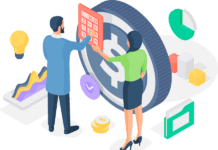 Companies buy software platforms to solve specific problems, but do they really understand how each tool is best utilised across their enterprise software as a service (eSaaS) environment? The sprawling nature of a typical IT estate leads to a plethora of inefficiencies, which complicates a company’s ability to integrate, adopt, and maximise its investment when procuring additional licences or technologies.
Companies buy software platforms to solve specific problems, but do they really understand how each tool is best utilised across their enterprise software as a service (eSaaS) environment? The sprawling nature of a typical IT estate leads to a plethora of inefficiencies, which complicates a company’s ability to integrate, adopt, and maximise its investment when procuring additional licences or technologies.
Written by: Manish Tandon (pictured) , CEO & MD, Zensar Technologies
The key to bridging these inefficiencies lies in the interplay between eSaaS applications and the associated skills employees use to leverage them. Companies who succeed in harnessing the power of technology through a skilled, adaptable, and informed workforce are positioned to fundamentally change the business landscape. By embracing the synergies of the technology-employee relationship, companies can stay agile, meet evolving customer demands, and forge clear paths to competitive advantage.
Embrace an experience-led approach
To have a measurable impact, any enterprise tool or system must be developed and evangelised with employees in mind. That is, design, implementation, and adoption must be experience-led. If adoption never takes off or rapidly dwindles, you have a problem somewhere in the technology-employee relationship.
Employees are discerning customers who demand direct relevance between their technology and their daily lives, whether at work or home. Convincing them that an enterprise product, service, or tool is worthwhile is an experience design issue, even if under the auspices of the CIO or technology leadership.
Of course, to optimise your eSaaS environment, you need to perform due diligence activities like rationalising maturity in terms of use, spend, adoption, and team structure. But to supercharge success, you must also lean into the principles of marketing, psychology, and human insight to help prioritise the jobs to be done in your digital estate. This connected way of thinking–coupling technology and experience to drive engagement–is the only way to influence return consistently.
Think like a retailer
The potential of eSaaS platforms is enormous, as are the complexities of rapid scale, changing customer demands, and new innovations. Often, costly tools are underutilised or duplicated, and infrastructure grows unwieldy to accommodate short-lived, bespoke functionality.
To help unravel these complexities, focus on employee adoption. Get your employees on your side by marketing the technology to them; keep them engaged by evolving the systems to be as usable and engaging as possible without breaking the bank.
This means treating your employees like customers, orienting your eSaaS suite as if it were a range of products on the digital or physical shelves of the world’s best retailer. You need to run campaigns, diversify your communications, and strive to be both accurate and compelling.
Let insight lead the way
Using employee insight to guide the technology-employee relationship ensures the right tools are being deployed at the right time, helping to maximise return on investment. This requires taking an outside-in approach to gain a full understanding not only of what the technology can do but also of how your employees will use it. Start by creating internal research teams who know the intricacies of your eSaaS systems and who can spend time with employee user groups to uncover their existing pain points and workarounds, as well as their desired experience.
To drive effective adoption, research teams need to interact with employees both broadly and deeply. Communications should engage employees from across the organisation and keep them informed as the research unfolds. User groups should delve into the depths of a technology’s functionality to discover efficiencies that will lead to wide, ongoing engagement. Emphasising employee insight in your implementation and adoption plans allows you to decisively strengthen your enterprise systems while also enhancing your employees’ experience of them.
Train your teams
Targeted, tangible training brings all your rationalisation activities, user group research, and employee insight to life. Because training is often your employees’ first hands-on interaction with a new tool or product, it is essential for making the most of your digital spend. This is particularly true for those trickier-to-grasp platforms and specialised processes that may be required for your operating model.
Exceptional training materials will speak to real pain points with existing systems, clearly articulate how new functionality will alleviate such issues, and demonstrate ease of use. Whether immersive walkthroughs or quick reference documents, these materials need to reflect the same approach and follow-through you have already established.
Call on additional support
Aligning eSaaS systems, employee experience, and ongoing engagement is a powerful force for experience-led adoption, but it does not stand alone. To complement a strong technology-employee relationship, consider investing in your business process engineering teams. These people act as architects of success by bringing together technologies, various stakeholder groups, and financial decision-makers to promote optimisation.
These teams undertake regular and robust audits of your ever-expanding technology stack to ensure platform suites are being used to their full potential. With a focus on the needs of both the company and its employees, business process engineers lead the careful consolidation of technologies that are not working due to lack of engagement, poor usability, high cost, or redundancy.
Your employees mirror your customers
To take the lead in shaping today’s business landscape, companies must treat their internal eSaaS systems and the associated employee experience as if they were working with a customer. Much like your customers, your employees perceive products, services, tools, and workflows as connected pieces of a single system. They expect this system to smoothly support them in their jobs, and when the experience matches the expectation, the business moves forward effectively, efficiently, and confidently.








































